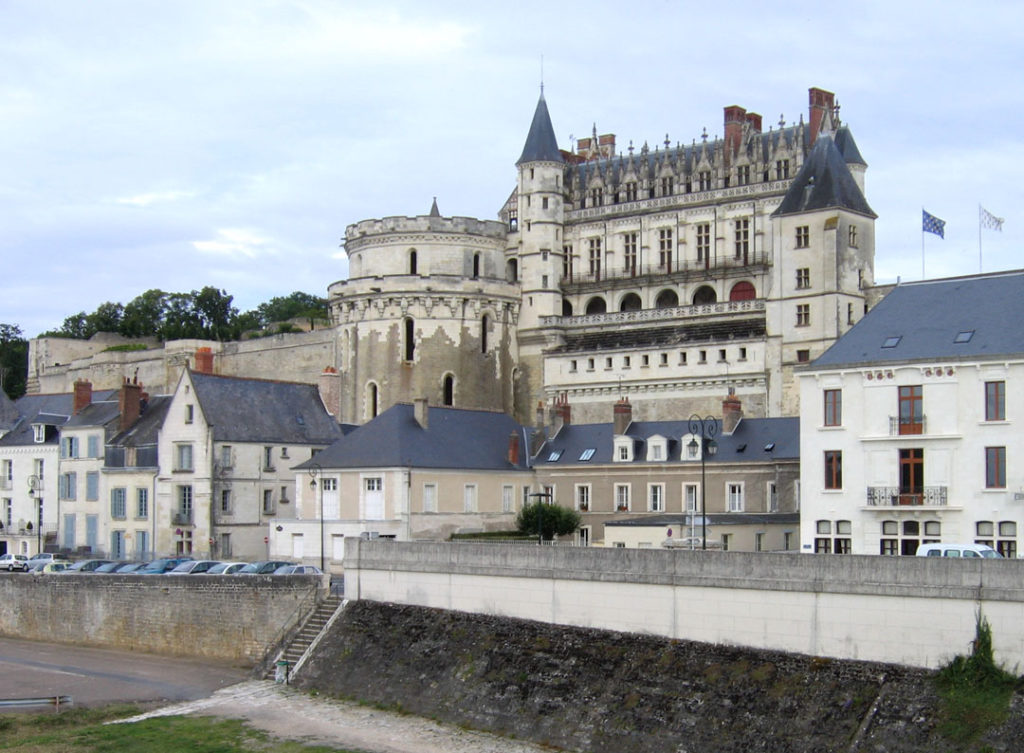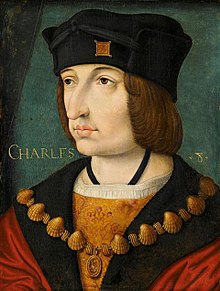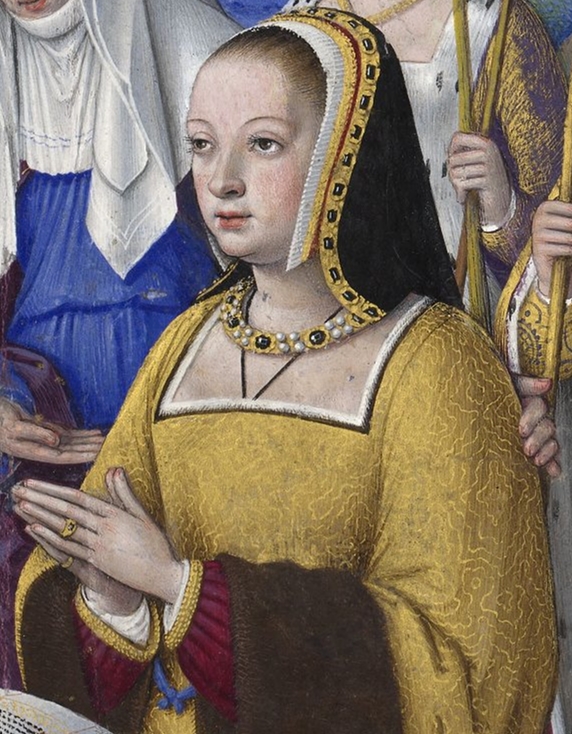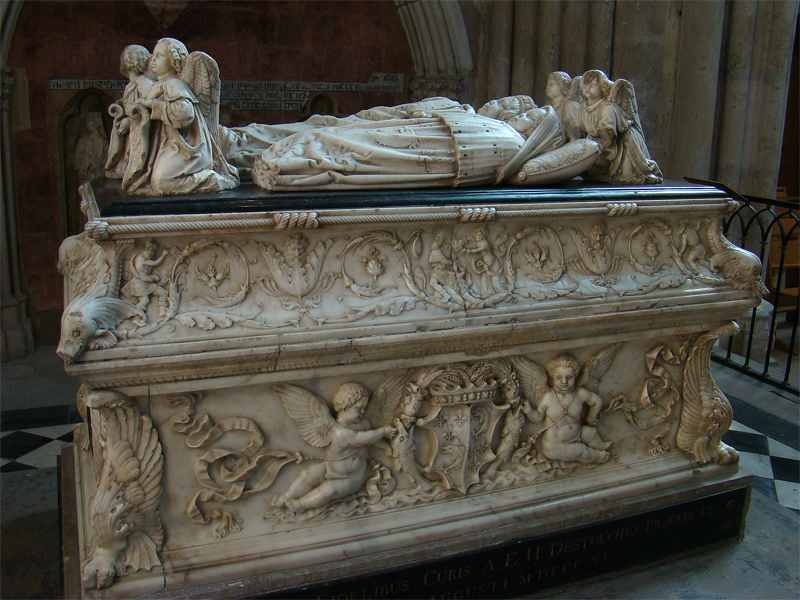Charles Orland, Dauphin of France, was born on the 11th of October 1492. His parents were King Charles VIII of France called the Affable (l’Affable) and Anne de Bretagne (Anne of Brittany), who was his consort and Duchess of Brittany in her own right. Charles Orland was their eldest son, and later, Anne was pregnant 5 more times, but it seemed as if some curse had hung over their progeny – they all died in infanthood, were stillborn or miscarried. Little Charles Orland passed away of measles on the 16th of December 1495, at the age of only 3.

His birth brought a profound joy to both of his parents. According to contemporary sources, Anne had quite an easy labor and birthed a robust, bonny child. His parents and his godmother, Jeanne de Laval, who was widow of King René I of Naples, were inclined to name him Orland in honor of Roland, who was a legendary Carolingian hero from the old chanson de Roland. His other male godfathers – Louis, Duke d’Orléans (future Louis XII of France) and Pierre II, Duke de Bourbon – did not allow to give the child a foreign name, insisting that the boy should be named Louis, Philippe, or Charles, just as all French monarchs were. The compromise was found: the little dauphin was named Charles Orland, and Carolus Orlandus in Latin. On the 13th of October, he was baptized in the Church of Saint Jean of Plessisour in a lavish and elaborate ceremony.
The chronicler Philippe de Commines (a writer and diplomat in the courts of Burgundy and France, who served especially loyally to King Louis XI of France) described the boy:
“Beautiful child and daring in word, not fearing the things that the other children are accustomed to fear.”

Charles Orland learned to speak fluently by the age of 3. At Charles VIII’s behest, the boy’s household was installed at Château d’Amboise, where the dauphin stayed during his short life. A team of servants and governors supervised the wellbeing of their little charge, and his parents expected that soon more siblings would join him in the nursery. However, Anne suffered 2 miscarriages – one in August 1493 and one in March 1495. Serious measures were taken to protect their only heir: hunting in the forest of Amboise was prohibited, and the gates of the city were reduced to 4 to monitor traffic more easily and to seal the city where necessary. Even a squad of archers safeguarded the castle every day. Charles Orland remained their only surviving child, so his parents doted on him and loved him, but fate put a cruel end to their happiness.
We understand why Charles Orland died – the reason for his demise seems to be measles, and the absence of professional knowledge didn’t allow the royal physicians to save the boy. His parents were bereft: a sad Charles was more stoic, while Anne was so disconsolate that her husband and others feared for her sanity. In September 1496, after Charles Orland’s death, another son was born, only to die 2 days later. In July 1497, another boy, François, lived only for several hours. In March 1498, Anne gave birth to a daughter who was named Anne, but the baby was also a short-lived one. All of the couple’s children were interred at Tours Cathedral.

On the 7th of April 1498, Charles VIII died after the accident when he had hit his head on the lintel of a door. After his successor and cousin – King Louis XII of France – had obtained the annulment of his union with Jeanne de France, Louis XI’s deformed daughter, he married Anne de Bretagne, making her Queen of France for the second time. Louis XII’s motives were political: he needed to keep Brittany as part of the French realm not to have the entire country encircled by the Habsburg lands. Among Louis and Anne’s children, only their 2 daughters survived: Claude de France, born in 1499 and being their first child, and Renée de France, born in 1510. In 1500, 1501, 1503, 1507, and 1513, Anne produced stillborn or short-lived children, many of whom were born premature, or she might have miscarried some of them. On the 9th of January 1514, Anne died aged thirty-seven, after at least 14 pregnancies and only 2 surviving daughters. Why was that so?
The first answer that comes to one’s mind is the absence of proper medical knowledge and care, as well as the lack of hygiene back then. This is a plausible explanation, and we can also add two more – epidemics and bad luck. But why did some other French royal couples had many children, most of whom survived? For example, King Jean II of France and his first wife, Bonne de Luxembourg, had 10 children, 7 of whom survived into adulthood? Charles VIII’s father, Louis XI of France, had 8 children with Charlotte de Savoy, but only 3 of them survived, although Jeanne de France, Louis XII’s first wife, was deformed. Anne de Bretagne had reproductive problems with both Charles VIII and Louis XII. So, maybe it happened not only due to bad lack and other mentioned reasons?

Who were the parents of Anne de Bretagne? Her mother was Margaret de Foix, a daughter of Gaston IV, Count de Foix, and Princess Eleanor de Navarre. Gaston IV de Foix was a son of Jean I, Count de Foix, and Jeanne d’Albret. Eleanor of Navarre was a daughter of Jean II of Aragon and Blanche I of Navarre, whose father was Charles III of Navarre from the House of Évreux that was a cadet branch of the Capetian dynasty. Anne de Bretagne’s father was François II, Duke of Brittany, who was a son of Richard of Brittany and Margaret d’Orléans, a daughter of the tragically murdered Louis I, Duke d’Orléans and a Valois princess. Richard of Brittany’s parents were Jean IV, Duke of Brittany, and Jeanne de Navarre, also a member of the House of Évreux. Anne de Bretagne was a mixture of Capetian, Valois, and some other blood – a product of generational inbreeding, and she was lucky to survive into adulthood.
Looking at the ancestry trees of Louis XII and Charles VIII, we see that they were mixtures of Capetian, Valois, Savoyard, Cleves (in Louise XII’s case), and some other blood. The members of the Valois family married within the family – the representatives of the House of Capet, Valois, and Bourbon – for centuries. The ruling dynasties of Savoy and Brittany were also connected with them by blood. Either on maternal or paternal side, Anne de Bretagne, Charles VIII, and Louis XII all descended from King Jean II of France known as the Good (le Bon), so they were all cousins. Through his mother, Charlotte de Savoy, Charles VIII was a great-grandson of Mary de Bourgogne, Duchess de Savoy, a daughter of Philippe the Bold (a Valois prince) and his wife, Countess Margaret III of Flanders, which means that Charles VIII had the Valois blood running through his veins on both paternal and maternal sides. The senior Valois line was so inbred that Charles’ marriage to Anne de Bretagne, who also had Valois and Capetian ancestors, added to the already existing reproductive problems, which are observed in Louis XI’s marriage to Charlotte de Savoy. Maybe Charles Orland seemed to be a healthy child, but his immune system turned out to be weak enough to win the battle against measles.
One of the few marriages within the Valois-Capetian family that brought fresh blood to the progeny was the matrimony of King Jean II of France and Bonne de Luxembourg. Bonne’s parents were John, King of Bohemia, and Elizabeth of Bohemia. On paternal side, her grandparents were Henry VII, Holy Roman Emperor, and Margaret of Brabant. On maternal side, her grandparents were Wenceslaus II of Bohemia and Judith von Habsburg. The Valois family was related to the House of Habsburg even in the 13th century! Thus, Jean and Bonne’s large progeny was healthy enough to live quite long lives, save several of their offspring. Their descendants actively intermarried with each other, which eventually resulted in the end of the Valois senior male line with the death of Charles VIII and the end of the Valois-Orléans male line with the passing of Louis XII. From the biological standpoint, the Valois dynasty would have had more chances to survive if King François I of France, who succeeded Louis XII from the House of Valois-Orléans-Angoulême, married not his 2nd cousin Claude de France, but some princess who was far more distantly related to him, for it was difficult to find someone entirely unrelated among royals.

Louis XII of France was a grandson of Louis I, Duke d’Orléans, and Valentina Visconti. His second spouse, Anne de Bretagne, was a granddaughter of Margaret d’Orléans, which makes her a great-granddaughter of Louis I, Duke of Orléans, and Valentina Visconti. How many more blood connections can we find between them? Quite many! A cousin marriage in one generation might cause no harm to the progeny that can be healthy, although it is not guaranteed. But if this practice is repeated through generations, then the inbred genes, together with recessive disorders, are passed on to surviving offspring, who later again married their cousins, creating the inbreeding circle of fatality. Given the above, it is not strange at all that Anne de Bretagne had many stillbirths and miscarriages, not knowing that the reason for her childbearing problems in her both marriages lay in her own blood and genes, and in those of her two husbands.
All images are in the public domain.
Text © 2020 Olivia Longueville





